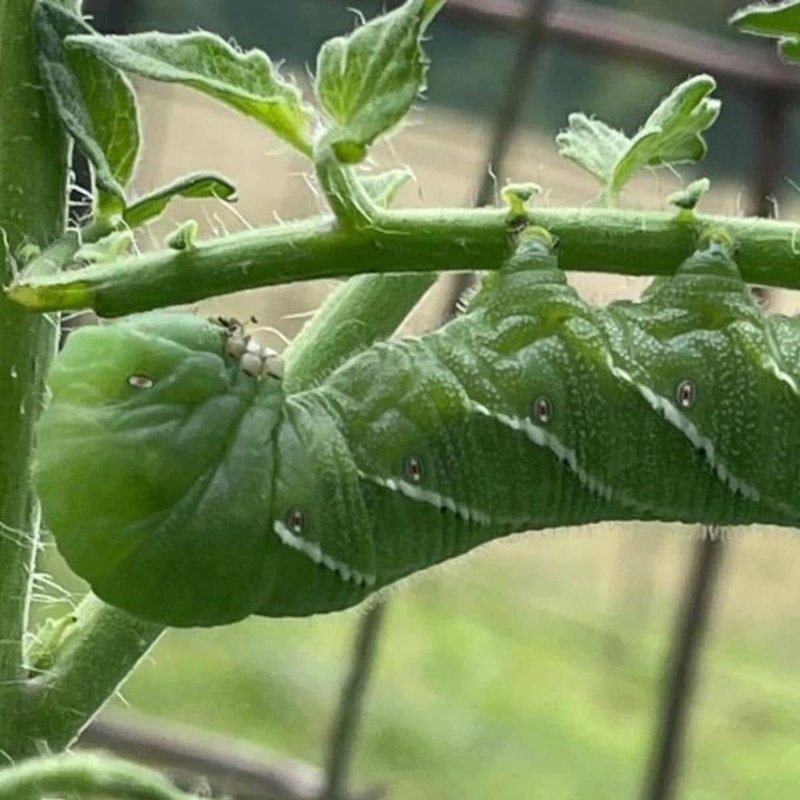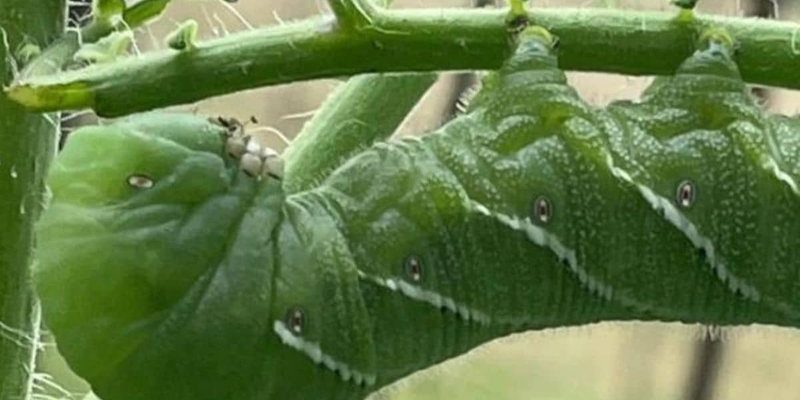
Imagine treating your tomatoes to a VIP experience, where they get all the nutrients they need without any fuss. Hydroponic systems allow you to control every aspect of their environment, making it easier to grow great crops. However, even the most high-tech setups aren’t immune to pests like hornworms. Let’s dive into the nitty-gritty of hornworms, hydroponics, and how you can keep those pesky caterpillars at bay while enjoying thriving tomato plants.
What Are Hornworms?
Hornworms are the larval stage of certain moths, primarily the *Manduca sexta*, commonly known as the tobacco hornworm. These little guys are notorious for their appetite. They can grow up to four inches long and have a striking green color, making them blend in beautifully with tomato leaves. Unfortunately, this camouflage makes it hard for gardeners to spot them until they’ve damaged the plants significantly.
These caterpillars are considered one of the biggest threats to tomato plants in both traditional and hydroponic systems. They feast on the leaves and can strip a plant bare in just a few days. The real kicker? They can also damage the fruit, which can lead to rot and other problems. So, if you’re growing tomatoes hydroponically, being aware of hornworms is crucial to protecting your crop.
How Do Hornworms Affect Hydroponic Tomatoes?
In a hydroponic system, tomatoes are usually grown in nutrient-rich water instead of soil. This method provides many benefits, including faster growth and higher yields. However, hornworms don’t discriminate; they’ll munch away at your hydroponic tomatoes just as eagerly as they would in soil.
When hornworms invade your hydroponic setup, they can lead to several issues:
- Leaf Damage: Hornworms will eat through leaves, reducing the plant’s ability to photosynthesize effectively.
- Fruit Spoilage: They may target the developing fruit, creating wounds that can allow disease to enter.
- Plant Stress: A heavily infested plant will be stressed, making it more vulnerable to other pests and diseases.
It’s essential to check for hornworms regularly in your hydroponic garden. A thorough inspection can save your plants from significant damage.
Identifying Hornworms in Your Hydroponic System
You might be wondering how to spot these sneaky caterpillars. Since they blend in so well, a keen eye is necessary. Here are a few tips to help you identify hornworms before they do too much damage:
1. **Look for Large Caterpillars:** Hornworms are chunky, green caterpillars about 3-4 inches long. They have a distinctive horn-like structure on their rear end, which is why they’re called hornworms.
2. **Check for Frass:** This charming term refers to caterpillar droppings. If you see small green or black pellets around your plants, hornworms are likely nearby.
3. **Inspect the Leaves:** If the leaves are disappearing or have large holes, it’s time to investigate. Hornworms typically eat the entire leaf, leaving nothing but stems behind.
4. **Keep an Eye Out for Moth Activity:** Adult hornworms develop into large moths. If you notice these moths fluttering around your hydroponic setup, it may be a sign that they’re laying eggs on your plants.
By being proactive and regularly inspecting your plants, you can catch hornworms before they become a major problem.
Preventing Hornworm Infestations
Taking preventive measures can save your hydroponic tomatoes from hornworms. Here are some effective strategies to keep these pests at bay:
1. **Regular Monitoring:** Make it a habit to check your plants frequently for any signs of hornworms or damage.
2. **Beneficial Insects:** Introduce natural predators like ladybugs or parasitic wasps. These insects can help control hornworm populations without harming your plants.
3. **Companion Planting:** Some plants can deter hornworms. Consider planting herbs like basil or marigolds near your tomatoes. They not only enhance flavor but can help keep pests away.
4. **Maintain Cleanliness:** Keep your hydroponic system clean and free of debris. This reduces hiding spots for hornworms and other pests.
By being vigilant and taking these steps, you can create a healthier environment for your hydroponic tomatoes while keeping those pesky hornworms in check.
Treating Hornworm Infestations
If you’ve found hornworms on your hydroponic plants, don’t panic! Here’s how to deal with them effectively:
1. **Handpicking:** This is the most straightforward approach. If you see a hornworm, just pick it off and dispose of it. It may sound gross, but it’s quite effective for small infestations.
2. **Insecticidal Soaps:** These can be used as a gentle treatment for your plants. Make sure to follow the instructions carefully and rinse any chemicals off the tomatoes before harvesting.
3. **Nematodes:** These microscopic worms can be a fantastic solution. They enter hornworms and kill them without harming your plants.
4. **Bacillus thuringiensis (Bt):** This natural bacterium is a popular choice among organic gardeners. It targets hornworms specifically and is safe for other beneficial insects.
Applying these treatments promptly ensures you can reclaim your hydroponic system without too much damage.
The Benefits of Hydroponic Tomato Systems
So, why go hydroponic in the first place? Hydroponic systems offer several advantages over traditional gardening, especially for tomatoes:
1. **Faster Growth:** In hydroponics, plants can grow about 30% faster than in soil, thanks to the direct access to nutrients and water.
2. **Space Efficiency:** Hydroponic setups can be more compact. This allows you to grow more tomatoes in a smaller area, making it ideal for urban gardening.
3. **Reduced Pest Issues:** While hornworms can still invade, many soil-borne pests don’t pose a threat in hydroponic systems. This makes it easier to maintain a healthy crop.
4. **Optimal Control:** You have full control over nutrients, pH, and moisture levels, resulting in better flavor and quality.
With these benefits, many gardeners find hydroponic systems to be a rewarding choice. And while hornworms are a challenge, the rewards of growing tomatoes in this way often outweigh the risks.
Choosing The Right Hydroponic System For Tomatoes
There are several types of hydroponic systems, each with its pros and cons. Here’s a brief overview of a few popular ones:
| System Type | Description | Pros | Cons |
|---|---|---|---|
| Deep Water Culture | Plants sit in a nutrient-rich solution with oxygen from air stones. | Simple setup, fast growth | Root rot possible if not monitored |
| Nutrient Film Technique | A thin film of nutrient solution flows over the roots. | Efficient use of water and nutrients | Requires more maintenance |
| Vertical Hydroponics | Plants are stacked vertically in towers. | Maximizes space; great for urban environments | Can be tricky to manage |
When selecting a system, consider your space, budget, and how much time you want to dedicate to maintenance.
Hornworms and hydroponic tomato systems may seem like an unlikely pairing, but understanding both is crucial for any aspiring gardener. While hornworms can put a dent in your tomato dreams, being proactive can help you manage them effectively. Hydroponics offers an excellent way to grow fresh, tasty tomatoes without the hassle of traditional soil gardening.
By choosing the right hydroponic system, implementing preventive measures, and knowing how to tackle hornworms when they appear, you’ll set yourself up for success. So, grab your gardening gloves, delve into the world of hydroponics, and enjoy the sweet reward of homegrown tomatoes—all while keeping those pesky hornworms at bay!

